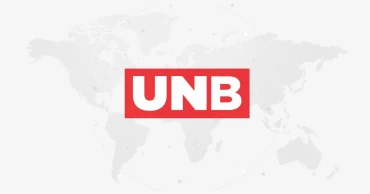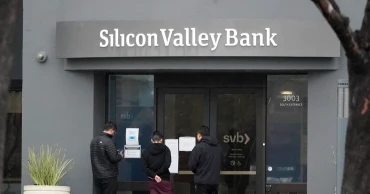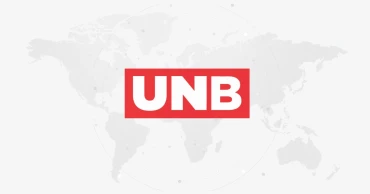Silicon Valley
Washington reacts on the fly to Silicon Valley Bank failure
After the sudden collapse of Silicon Valley Bank, California Democratic Rep. Maxine Waters started furiously working the phones to find out what was going on with the failed lender — and what would happen to its panicked depositors.
Waters, former chair of the House Financial Services Committee, had her doubts that another bank would step up as a savior and buy the defunct institution.
“Banks don’t just wake up and say: ‘Oh, there’s a problem with another significant bank and they’ve collapsed. Let’s just take it over,’’’ she said.
So began a frenetic weekend of nonstop briefings with regulators, lawmakers, administration officials and President Joe Biden himself about how to handle the demise of the nation's 16th-biggest bank and a go-to financial institution for tech entrepreneurs. At the core of the problem was tens of billions of dollars — including money companies needed to meet payrolls — sitting in Silicon Valley Bank accounts that were not protected by federal deposit insurance that only goes up to $250,000.
Also Read: To avert a banking crisis, HSBC to take over UK arm of failed Silicon Valley Bank
Something needed to be done, federal officials agreed, before Asian stock markets opened Sunday evening and other banks faced the potential for waves of panicked withdrawals Monday morning.
“We were racing against the clock,” said Bharat Ramamurti, deputy director of the National Economic Council.
Waters was right to be skeptical about a sale being closed on the fly. The bank’s size — $210 billion in assets — and complexity made it difficult to quickly wrap up a deal.
Federal Deposit Insurance Corp. officials told Republican senators Monday that they received offers for the bank over the weekend but didn’t have time to close; they said they could put Silicon Valley Bank up for auction again, according to a person familiar with the conversation who requested anonymity to discuss a private call.
Also Read: Asian shares mostly sink on jitters after US bank failure
But another plan was coming together. On Sunday, Waters was on the phone with Federal Reserve Chair Jerome Powell, who briefed her on how it would work. The Fed was creating a new emergency program that allowed it to lend directly to banks so they could cover withdrawals without having to sell off assets to raise cash. The idea was to reassure depositors and prevent bank runs at other institutions.
By Sunday night, the Treasury Department, the Fed and the FDIC said the federal government would protect all deposits — even those that exceeded the FDIC’s $250,000 limit.
“It’s miraculous, really,’’ Waters said, calling it "an example of what working together and what government can do with the right people in charge.’’
The praise was not unanimous.
In the call Monday with officials from the FDIC and the Treasury Department, Republican senators expressed concern that millionaire Silicon Valley depositors were being rescued — and the cost might be passed onto community banks in their home states in the form of higher assessments for federal deposit insurance, according to the person familiar with the discussion.
The trouble started last Wednesday when Silicon Valley Bank said it needed to raise $2.25 billion to shore up its finances after suffering big losses on its bond portfolio, which had plunged in value as the Federal Reserve raised interest rates. On Thursday, depositors rushed to pull their money out. An old-fashioned bank run was underway.
At a House Ways and Means committee hearing on Friday morning, Treasury Secretary Janet Yellen said her agency was “monitoring very carefully” developments related to the bank. “When banks experience financial losses, it is and should be a matter of concern,” she told lawmakers.
Biden was briefed about the situation on Friday morning, according to a White House official who spoke on condition of anonymity to discuss private conversations. Then he celebrated an unexpectedly strong February jobs report, met with the leader of the European Union and jetted off to Wilmington, Delaware, to mark his grandson’s 17th birthday.
His weekend would soon be consumed with phone and video calls focused on preventing a nationwide banking crisis. Regulators were so concerned, they didn't even wait until the close of business on Friday — the usual practice — to shut the bank down; they closed the doors during working hours.
It was the second-biggest bank failure in U.S. history and trickier than most: An astonishing 94% of Silicon Valley Bank's deposits — including large cash holdings by tech startups — were uninsured by the FDIC.
As administration officials and regulators worked through the weekend, Biden expressed concern about small businesses and their employees who relied on accounts that were now in jeopardy, the White House official said.
There were also fears, the official said, that if Silicon Valley Bank depositors lost money, others would lose faith in the banking system and rush to withdraw money on Monday, causing a cascading crisis.
Massachusetts Democratic Rep. Jake Auchincloss’ phone had started lighting up even before the weekend. Silicon Valley Bank had eight branches and offices in his home state, and word of its failure was traveling fast on social media.
“The panic within Massachusetts industry and nonprofit sectors became acute within a matter of hours,’’ Auchincloss said. “My phone started just exploding.’’
Silicon Valley Bank wouldn't be the only bank to collapse. By Sunday evening, federal officials announced that New York-based Signature Bank, a major lender to New York landlords, had also failed and was being seized.
The government's plan to cover deposits over $250,000 ended up applying to Signature's customers as well.
In a statement Sunday, Biden said, "The American people and American businesses can have confidence that their bank deposits will be there when they need them.''
On Monday, Powell announced that the Fed would review its supervision of Silicon Valley Bank to understand what went wrong. The review will be conducted by Michael Barr, the Fed vice chair who oversees bank oversight, and be released May 1.
Now Biden and lawmakers are calling for legislative changes to tighten financial rules on regional banks, perhaps restoring parts of the Dodd-Frank law that tightened bank regulation after the 2008-2009 financial crisis but were rolled back five years ago.
Waters said it might be time to raise deposit insurance thresholds. "We can't just say this is an emergency and forget about it,'' she said.
2 years ago
Startup-focused Silicon Valley Bank becomes largest bank to fail since 2008 financial crisis
Regulators rushed Friday to seize the assets of one of Silicon Valley's top banks, marking the largest failure of a U.S. financial institution since the height of the financial crisis almost 15 years ago.
Silicon Valley Bank, the nation’s 16th-largest bank, failed after depositors hurried to withdraw money this week amid anxiety over the bank’s health. It was the second biggest bank failure in U.S. history after the collapse of Washington Mutual in 2008.
The bank served mostly technology workers and venture capital-backed companies, including some of the industry's best-known brands.
“This is an extinction-level event for startups,” said Garry Tan, CEO of Y Combinator, a startup incubator that launched Airbnb, DoorDash and Dropbox and has referred hundreds of entrepreneurs to the bank.
Also Read: 8 dead in shooting at rail yard serving Silicon Valley
“I literally have been hearing from hundreds of our founders asking for help on how they can get through this. They are asking, ‘Do I have to furlough my workers?’”
There appeared to be little chance of the chaos spreading in the broader banking sector, as it did in the months leading up to the Great Recession. The biggest banks — those most likely to cause an economic meltdown — have healthy balance sheets and plenty of capital.
Nearly half of the U.S. technology and health care companies that went public last year after getting early funding from venture capital firms were Silicon Valley Bank customers, according to the bank’s website.
The bank also boasted of its connections to leading tech companies such as Shopify, ZipRecruiter and one of the top venture capital firms, Andreesson Horowitz.
Tan estimated that nearly one-third of Y Combinator’s startups will not be able to make payroll at some point in the next month if they cannot access their money.
Internet TV provider Roku was among casualties of the bank collapse. It said in a regulatory filing Friday that about 26% of its cash — $487 million — was deposited at Silicon Valley Bank.
Roku said its deposits with SVB were largely uninsured and it didn’t know “to what extent” it would be able to recover them.
As part of the seizure, California bank regulators and the FDIC transferred the bank's assets to a newly created institution — the Deposit Insurance Bank of Santa Clara. The new bank will start paying out insured deposits on Monday. Then the FDIC and California regulators plan to sell off the rest of the assets to make other depositors whole.
There was unease in the banking sector all week, with shares tumbling by double digits. Then news of Silicon Valley Bank's distress pushed shares of almost all financial institutions even lower Friday.
The failure arrived with incredible speed. Some industry analysts suggested Friday that the bank was still a good company and a wise investment. Meanwhile, Silicon Valley Bank executives were trying to raise capital and find additional investors. However, trading in the bank’s shares was halted before stock market's opening bell due to extreme volatility.
Shortly before noon, the FDIC moved to shutter the bank. Notably, the agency did not wait until the close of business, which is the typical approach. The FDIC could not immediately find a buyer for the bank's assets, signaling how fast depositors cashed out.
The White House said Treasury Secretary Janet Yellen was “watching closely.” The administration sought to reassure the public that the banking system is much healthier than during the Great Recession.
“Our banking system is in a fundamentally different place than it was, you know, a decade ago,” said Cecilia Rouse, chair of the White House Council of Economic Advisers. “The reforms that were put in place back then really provide the kind of resilience that we’d like to see.”
In 2007, the biggest financial crisis since the Great Depression rippled across the globe after mortgage-backed securities tied to ill-advised housing loans collapsed in value. The panic on Wall Street led to the demise of Lehman Brothers, a firm founded in 1847. Because major banks had extensive exposure to one another, the crisis led to a cascading breakdown in the global financial system, putting millions out of work.
At the time of its failure, Silicon Valley Bank, which is based in Santa Clara, California, had $209 billion in total assets, the FDIC said. It was unclear how many of its deposits were above the $250,000 insurance limit, but previous regulatory reports showed that lots of accounts exceeded that amount.
The bank announced plans Thursday to raise up to $1.75 billion in order to strengthen its capital position. That sent investors scurrying and shares plunged 60%. They tumbled lower still Friday before the opening of the Nasdaq, where the bank's shares were traded.
As its name implied, Silicon Valley Bank was a major financial conduit between the technology sector, startups and tech workers. It was seen as good business sense to develop a relationship with the bank if a startup founder wanted to find new investors or go public.
Conceived in 1983 by co-founders Bill Biggerstaff and Robert Medearis during a poker game, the bank leveraged its Silicon Valley roots to become a financial cornerstone in the tech industry.
Bill Tyler, the CEO of TWG Supply in Grapevine, Texas, said he first realized something was wrong when his employees texted him at 6:30 a.m. Friday to complain that they did not receive their paychecks.
TWG, which has just 18 employees, had already sent the money for the checks to a payroll services provider that used Silicon Valley Bank. Tyler was scrambling to figure out how to pay his workers.
"We’re waiting on roughly $27,000," he said. "It’s already not a timely payment. It’s already an uncomfortable position. I don’t want to ask any employees, to say, ‘Hey, can you wait until mid-next week to get paid?’”
Silicon Valley Bank's ties to the tech sector added to its troubles. Technology stocks have been hit hard in the past 18 months after a growth surge during the pandemic, and layoffs have spread throughout the industry. Venture capital funding has also been declining.
At the same time, the bank was hit hard by the Federal Reserve's fight against inflation and an aggressive series of interest rate hikes to cool the economy.
As the Fed raises its benchmark interest rate, the value of generally stable bonds starts to fall. That is not typically a problem, but when depositors grow anxious and begin withdrawing their money, banks sometimes have to sell those bonds before they mature to cover the exodus.
That is exactly what happened to Silicon Valley Bank, which had to sell $21 billion in highly liquid assets to cover the sudden withdrawals. It took a $1.8 billion loss on that sale.
Ashley Tyrner, CEO of FarmboxRx, said she had spoken to several friends whose businesses are backed by venture capital. She described them as being “beside themselves” over the bank's failure. Tyrner's chief operating officer tried to withdraw her company's funds on Thursday but failed to do so in time.
“One friend said they couldn't make payroll today and cried when they had to inform 200 employees because of this issue,” Tyrner said.
2 years ago
Computer scientist behind cut, copy and paste dies aged 74
Larry Tesler, an icon of early computing, has died at the age of 74, reports the BBC.
5 years ago





